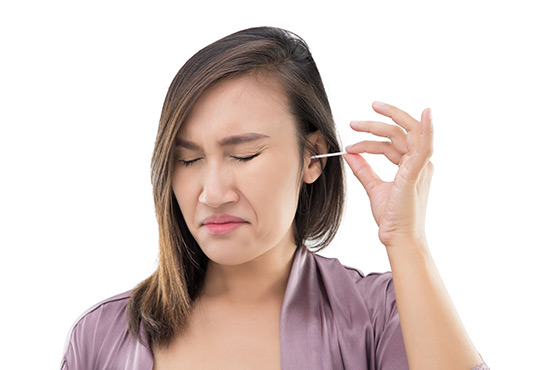Looking for help with ear health?
Find answers to your questions
Dangers of Using Cotton Swabs for Earwax Removal | Ear Health Tips, Clinere®
Table of Contents

Dangers of Using Cotton Swabs for Earwax Removal | Ear Health Tips, Clinere®
We rarely think or talk about earwax, unless it becomes a problem. That familiar feeling of fullness in the ear, temporary deafness, or even mild pain can drive you to the pharmacy to look for a solution. As a result, the majority of people tend to use cotton swabs as a way of removing the wax from the ear. But here’s the shocking truth: not only is earwax entirely normal and helpful for the body, using cotton swabs to remove it can actually cause more harm than help.
What is Earwax & Why Do We Need It?
Earwax has a negative connotation, but it is not dirt or superfluous fluid; it is a part of the body’s protective system. Medical terminology for earwax is “cerumen,” a combination of sebaceous and ceruminous gland secretions and dead skin cells. This wax-like substance has its uses; it helps lubricate the ear canal, prevents drying and itching, and protects it from dirt, dust, mites, and bacteria.
Earwax also has uses in the ear. Its antibacterial properties trap bacteria and other foreign particles before they enter the inner ear. Without it, your ears would be more vulnerable to infections, inflammation, and other health issues.
When Earwax Becomes a Problem
In its normal state, earwax naturally exits the ear. However, the problem arises when the wax builds up and impacts the eardrum. This can be due to genetics (some people produce more wax), the use of earplugs or earbuds, or—paradoxically—the attempt to clean the ears with cotton swabs.
Some of the symptoms of impacted earwax include:
- Muffled hearing or a sense of fullness in the ear
- Ringing in the ear or Tinnitus
- Ear pain or discomfort
- Dizziness or loss of balance
- Itch or drainage that is not normal
The Side Effects of Using Cotton Swabs
Cotton buds or swabs have been used to clean the ears for decades, but doctors do not recommend them. Instead of removing wax, cotton swabs can force it deeper into the ear canal and cause impaction or, even worse, hearing loss.
Dr. Melissa Conrad Stöppler, a medical expert at MedicineNet.com, explains:
“Using cotton tipped swabs to clean your ears actually has the effect of pushing the wax further into the ear canal. When a doctor sees wax pushed up against your eardrum, it is often because the patient has been probing their ear with objects like Q-tips, bobby pins, or even twisted napkin corners. These objects become ramrods to push the wax deeper and can cause problems.”
How to Properly Clean Your Ears
The best policy for ear hygiene is rather straightforward: Allow Mother Nature to take her course. The ear is a self-cleansing organ, with wax moving out of the ear naturally. Here are some safer options if you need to clean your ears:
- Use a damp cloth: Use a warm wet cloth to gently swipe the outside of the ear.
- Ear drops: Over-the-counter solutions can help break down earwax, which can then be washed out naturally.
- Irrigation: Using warm water to gently flush the ear (with the help of a doctor) can also remove wax build up.
A Safer Alternative: Clinere® Ear Cleaners
If you are in search for a better way to control earwax without the risk that comes with cotton swabs, then Clinere is for you. Cotton swabs have a way of forcing wax deeper into the ear, while Clinere has two different ends; a scoop end that helps in removing wax from the entrance to the ear canal to help prevent wax build up and a flexible fin end that offers exfoliation services.
Clinere offers a fast and simple solution that can be used on a daily basis without a mess or risk of harming the ear canal.
When Should You Seek Medical Attention?
At times, earwax buildup may need the attention of a professional. If you have severe hearing loss, or if you have discomfort or pain that does not go away, you should visit a doctor. A health caregiver will be able to use proper instruments and methods to remove the wax that is stuck in the ear.
When caring for your ears, it’s important to use safe best practices to avoid hearing damage or complications. Earwax is a protective element and when it builds up or causes discomfort it should be removed, however if it is not causing any problems, it may be best to let your body naturally cleanse. Cotton swabs may appear to be a quick solution, but they can cause a lot of problems. Rather, turn to Clinere Ear Cleaners and if wax buildup is too much, ask your doctor for help.
- Choosing a selection results in a full page refresh.
- Opens in a new window.
